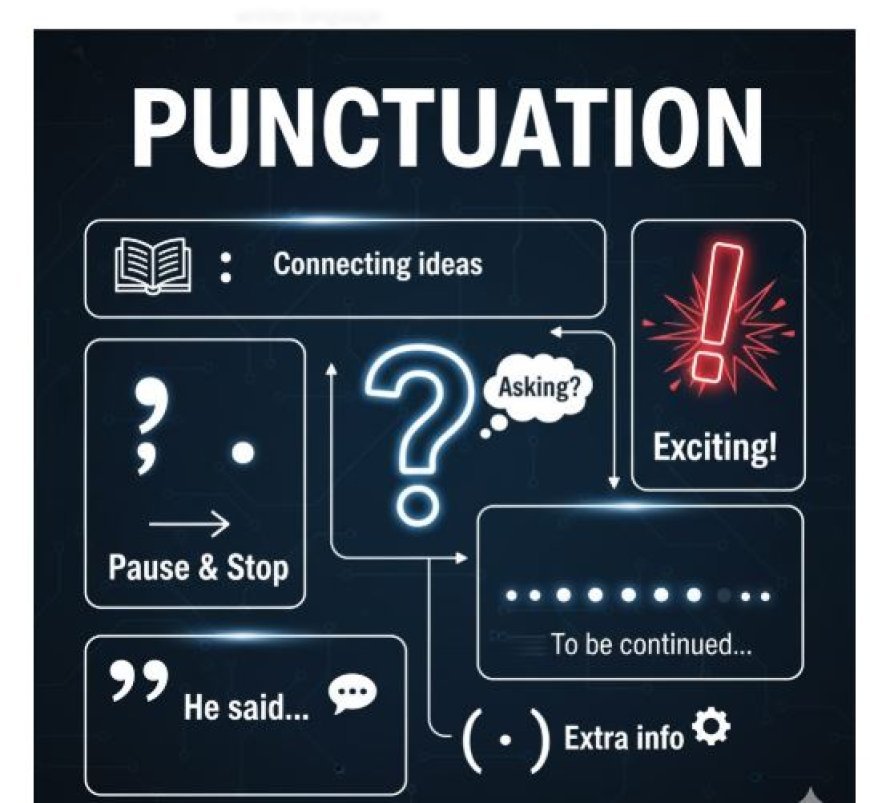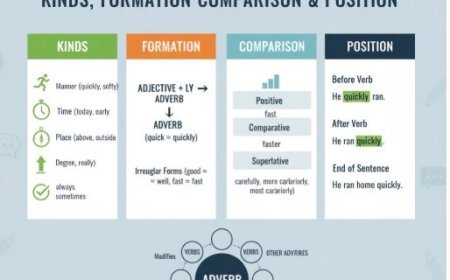PUNCTUATION
Punctuation: Tiny heroes, big impact! Master commas, periods, and more to add clarity and power to your writing.

PUNCTUATION
Introduction
Punctuation is the system of symbols used in writing to clarify meaning, indicate pauses, and organize text effectively. In this guide, we'll explore the significance of punctuation and the various punctuation marks used in English writing.
1. Importance of Punctuation
Punctuation plays a vital role in written communication for several reasons:
a. Clarifying Meaning
- Punctuation helps to clarify the meaning of sentences by indicating where one idea ends and another begins. It helps readers understand the intended message without ambiguity.
b. Enhancing Readability
- Proper punctuation enhances the readability of text by breaking it into manageable chunks. It allows readers to navigate through the text smoothly, improving comprehension.
c. Conveying Tone and Emotion
- Punctuation marks such as exclamation points, question marks, and dashes help convey tone, emotion, and emphasis in writing. They add nuance and expressiveness to the text.
d. Organizing Information
- Punctuation marks like commas, colons, and semicolons are used to organize information and create logical relationships between ideas. They help structure the flow of writing.
2. Marks of Punctuation
Punctuation marks serve specific functions and are used in various contexts within written language. Let's explore some of the most common punctuation marks:
a. Period (.)
- The period is used to indicate the end of a declarative sentence or statement. It is also used in abbreviations.
b. Comma (,)
- Commas are versatile punctuation marks used to separate items in a list, set off introductory phrases or clauses, join independent clauses with coordinating conjunctions, and more.
c. Question Mark (?)
- The question mark is used at the end of a sentence to indicate a direct question or inquiry.
d. Exclamation Point (!)
- An exclamation point is used to express strong emotion, emphasis, or exclamatory remarks.
e. Colon (:)
- To begin a list, explanation, or quotation, use colons. They can also be used as titles, ratios, or times indicators.
f. Semicolon (;)
• Two closely related independent clauses can be joined using semicolons in the absence of a coordinating conjunction. When items in a list have commas, they can also be used to divide them apart.
g. Apostrophe (')
- Apostrophes are used to indicate possession, contractions, or omitted letters in contractions.
h. Quotation Marks (" ")
- Quotation marks are used to indicate direct speech, dialogue, or to enclose titles of short works.
i. Dash (—)
- Dashes are used to indicate a sudden break or interruption in thought, or to set off explanatory or parenthetical elements.
What's Your Reaction?


































